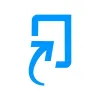
Digital Citizenship Week is October 20–24!
Join teachers worldwide to promote a healthy, positive approach to media and tech.
Take a look inside 2 images
Turnitin
Pros: Between the accountability and valuable feedback, it offers students and teachers a positive way to get real about improving writing skills.
Cons: Only schoolwide accounts are available, so individual teachers can't subscribe on their own; overall design could be improved a bit.
Bottom Line: Beyond the convenience factor, it's almost a necessity for the teaching of writing in today's digital world.
While ELA and social studies teachers may get the most out of the service, teachers in any content area will find it a helpful tool for assigning and evaluating students' writing. Have students submit papers, and then assign a peer evaluation project -- students can then revise using peer feedback before submitting a final draft. Teachers can use the interface to communicate with students via email or through the discussion forums.
The Discussions feature is a powerful tool for generating student interest in topics of depth and complexity. While engaging and empowering some of your more introverted students -- or those who may just be reluctant to share out loud in class -- the forums can also be a great way to encourage positive digital citizenship.
Editor's Note (11/28/22): The below review was written in 2013 and likely isn't representative of the current product. Since then, we've reached out to Turnitin multiple times to gain access for an update with no success.
Available through schoolwide subscription, Turnitin is an online plagiarism detector as well as an electronic grading and feedback system for students' writing assignments. As teachers create assignments, students submit files from a computer or a cloud-based service like Dropbox or Google Drive. Turnitin checks each assignment for plagiarism (or improper citation) using its OriginalityCheck system; assignments can also be peer- or teacher-evaluated using the PeerMark and GradeMark features. There's also a Forums section for hosting class discussions, with customizable moderation levels.
The OriginalityCheck feature checks student papers against a massive database of content, with detailed similarity reports for teachers. The GradeMark feature lets teachers use their own rubrics or select from a vast library of pre-loaded ones. Feedback can be given using premade or customizable markings; teachers can also attach comments to specific parts of students' papers.
Standout Features:
--Turnitin claims its OriginalityCheck database checks student work against more than 300 million student papers and more than 130 million academic texts, as well as a better part of the web.
--A companion iPad app allows teachers to grade on the go; using the app, teachers also have the option to leave voice comments.
--The Discussions feature has options to allow flexibility for a variety of engaging uses.
Without taking the teacher's place, Turnitin provides all the right support as teachers help students in the writing process. The plagiarism scanner works amazingly well -- it's an invaluable resource in the digital age. Originality reports are easy-to-read, (usually) appear within minutes of a submission, and offer links to original sources. Perhaps more important, the system catches work that hasn't been properly paraphrased or quoted, offering opportunities to re-teach and reinforce these valuable skills.
While some may still prefer the human touch of pen-and-paper marking, Turnitin offers a great way to give students detailed, constructive feedback -- without having to lug around stacks of papers. The PeerMark feature engages students in ongoing self-assessment as they pick up important online collaboration skills. The Discussions tool can allow for anonymity while also ensuring that students are held accountable. Within that tool, however, it would be great if Turnitin could tweak the design, as it can sometimes be tricky to delineate the flow of certain conversations between students. In terms of support, Turnitin offers thorough FAQs, videos, and even in-person trainings to help teachers make the most of this powerful tool.












